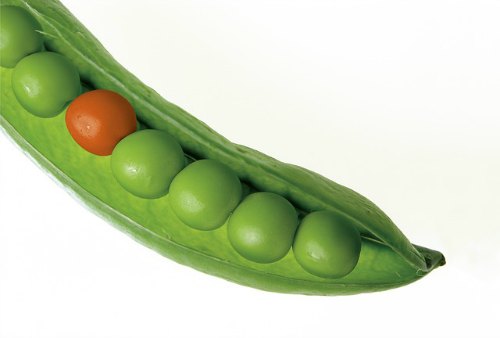The Seven Sources Of Innovation
The seven sources of innovation were highlighted by Peter Drucker (November 19, 1909 – November 11, 2005) who was a writer and well-respected management consultant.
The sources he defined were demographic changes, changes in perception, new knowledge, unexpected occurrences, incongruities, process needs and industry and market changes.

Drucker’s 7 Sources Of Innovation
Demographic Changes
Demographic changes or trends could include an aging population something which is occurring in many Western countries. It could also include changes to income and/or education levels. All of these changes can create new business opportunities and are likely to cause a shift in consumer demand.
Taking an aging population as an example, innovations will stem from this to assist people with worsening eyesight, hearing, and mobility or to provide leisure activities geared more toward an older generation.

Changes In Perception
This refers to shifts in societal attitudes and beliefs, such as changes in consumer preferences or values, which can create new opportunities for businesses.
Innovations can arise as a result of people’s changes in perception. One example of this would be the general public’s perception of tobacco which has changed significantly over the last fifty years or so. New innovations to help people stop the habit are occurring all the time as a result. From special nicotine-releasing gum and patches, right through to electronic cigarettes (an electronic inhaler that vaporizes a liquid solution into an aerosol mist, simulating the act of tobacco smoking).
Another example would be how we keep changing our perceptions of a particular food product. Butter was seen as too fatty and therefore a number of low-fat spread alternatives came on the market more recently we are now hearing that the body is better able to cope with processing butter than low-fat spreads and so there is a shift back to butter-based-products that have been designed to spread more easily.

New Knowledge
The Collins Dictionary defines new knowledge as “knowledge recently acquired or currently being acquired through observation, learning, thinking and experience”
Advancements in science and technology can lead to new products, processes, or services.
This, in my opinion, is a very strong producer of innovation.
Advancements in science, for example, is the formation of new knowledge. Such advancements are used constantly to create new, innovative products for us to use. Think of flat screen technology, electric powered vehicles, solar energy, wind energy, hydrogen fuel cells, etc, etc.

Unexpected Occurrences
Opportunities that arise unexpectedly, such as changes in consumer behavior or shifts in the economy.
Unexpected occurrences can be great sources of innovation. There are a number of good examples of how this can lead to new innovations… 3M Post-it notes stemmed from a glue that wasn’t quite sticky enough and Scotchgard apparently happened as a result of accidental spillage of a chemical on a 3M employee’s tennis shoes.

Incongruities
Drucker described incongruity as a discrepancy or a difference between what something already is and what something should be. There can be incongruities between perceived expectations and actual customer expectations, between the reality of something or an industry and the assumptions about that thing or industry.
An example of an incongruity between perceived expectations and actual customer expectations could be when many companies were trying to create smaller MP3 players with more functionality and storage. People were not necessarily after the increased specification of the MP3 player product though. Apple realized that the actual customer expectation was a means for them to be able to legally purchase, collect and organize their music and play on a device that was simple to use. So they revolutionized the industry with iTunes and the iPod.

Process Needs
Incongruities in a process. Process incongruity would look for something that is missing within a process.
Here we can think of any manual aspects of a process as examples. Ovens are used daily and then they need cleaning. Cleaning is a manual process and then came along self-cleaning ovens.
Watches need winding up, or batteries replacing and they also need the time to be adjusted every once in a while in order to remain accurate then came along solar-powered watches and watches that are radio controlled to automatically set to the correct time.

Industry And Market Changes
Industry and market changes are sources of innovation. Such changes often result as people change their preferences, tastes, and values.
One example would be people’s particular preference for a particular style of food. Mexican food becomes popular so up pops a Mexican fast-food chain such as Taco Bell.
Japanese cuisine becomes popular so up pop restaurants that demonstrate the art of sushi making, etc.
Drucker suggested that it was feasible for innovation to stem from any number of these aforementioned opportunities.
Ultimately though innovation still requires hard work/effort and this is highlighted in the following quote from Drucker in his article The discipline of innovation, Harvard Business Review:
“In innovation as in any other endeavor, there is talent, there is ingenuity, and there is knowledge. But when all is said and done, what innovation requires is hard, focused, purposeful work. If diligence, persistence, and commitment are lacking, talent, ingenuity, and knowledge are of no avail.”
Identifying opportunities for synergy across multiple businesses/industries would provide further innovation sources. However, for this to happen many companies and industries must network together.
This could be achieved by formulating intermediary teams whose purpose is to assist companies in visualizing new opportunities whilst ensuring that core competencies, interests, and plans are protected from competitors.
For an excellent book on the sources of innovation including by Drucker himself then please see below, the book was published back in 1985 but is still highly relevant today and also includes other important concepts related to the fascinating subject of innovation and entrepreneurship.
Other Innovation Sources

Beyond Drucker’s seven sources of Innovation, there are thought to be many other innovation sources.
For example, it is often thought that innovation stems from the great leaders of the world.
However, there are many other sources of innovation too, all of which can usually be categorized under the headings of people, concepts, or things.
Some popular sources include:
- The introduction of new technologies
- Scientific studies and breakthroughs
- New knowledge put forward in the public domain or made available from research organizations, universities, or provided by consultants/employees
- Market niches
- Customer demands
- Collaboration with customers, subject matter experts, and other stakeholders. More and more people are getting involved in contributing to innovation processes. The more people that are engaged in innovation processes, increases the likelihood for new opportunities to arise.
- Competitor products or services
- Rival innovations
- Public availability of knowledge.
- Regulations and standards
- Environmental issues
- Updated offerings from suppliers
- Information and communication technologies – the information age in which we live creates numerous opportunities to create new products and transform existing products and processes. More and more so the global population at large is contributing to major new innovations – see open market innovation for further details.
- Creative ideas – If you’re interested in increasing your ability to produce creative ideas then please visit the creative techniques page which describes a number of techniques that are aimed at increasing your creative abilities.
Recent research suggests that customer demand, market niches, and collaboration with customers are especially important sources and that the introduction of new technologies can often initiate the process. See here for lots more details about customer-driven innovation.